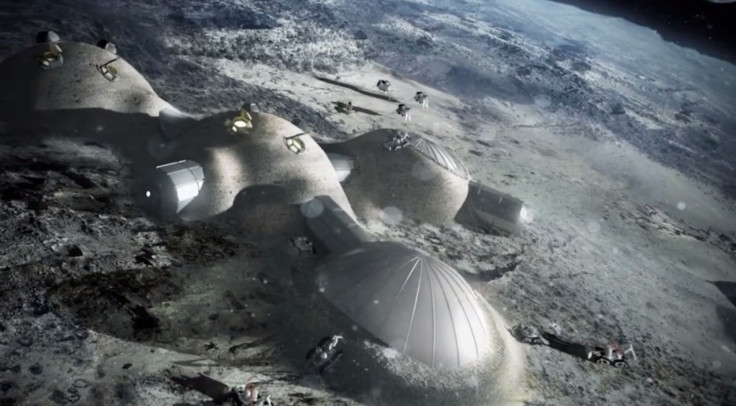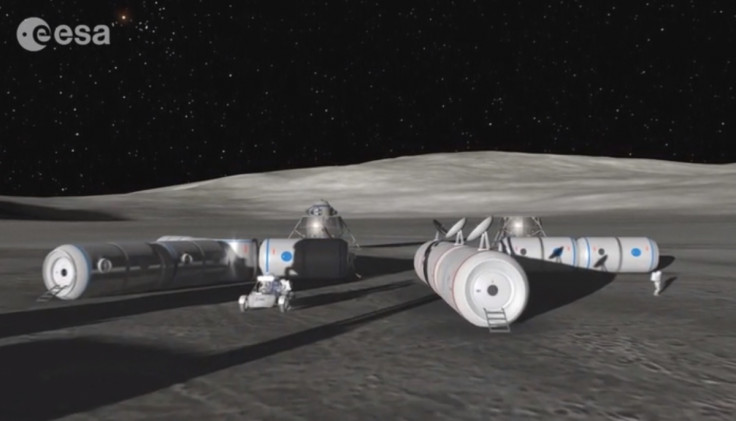How to colonise the Moon? Nasa technologist details habitats, water and farming on lunar surface
Of all the techniques that are being seriously studied, Robert Mueller believes 3D printing will lead the way in lunar construction.

Nasa is refocusing its efforts to land on the moon, and this could mean building a settlement or a gateway to the rest of the solar system that can sustain human life.
Building a moon base might not be as simple as carrying construction material in a rocket and laying it out. Before even thinking of settling on the lunar surface, it is necessary to understand how the environment on the Moon works. In an interview with Newsweek (NW), Nasa senior technologist and expert in building planetary outposts, Robert P. Mueller, detailed how it might be possible to set up a permanent habitat on the Moon.
The first aspect of construction on the Moon, according, to Mueller is the building of the two-dimensional features like roads, parking lots, landing pads, and thermal areas that can hold warmth from the Lunar daytime. Then comes the three-dimensional projects like the hangars and habitats. Such structures are more than just sheds, they need to be pressurised and airtight to make it possible for people to live and work.
When asked about the design of these buildings, Mueller spoke about the extreme environment of the Lunar surface. Construction on the moon has got to be robotic as humans will not be there, in the beginning, he added. Robots will have to be sent up first, they begin basic construction and humans arrive later, to inhabit. He added that the technology required for this is not yet here and that in 10 to 20 years from now, it could be possible.
Buildings itself have to be made out of local materials, Mueller said. While in the beginning, it will be necessary to prefabricate shelters, eventually, construction will have to become Earth-independent, he added. There are vast quantities of "Regolith" or crushed rocks that can be used for construction on the Moon. After the first phase of construction is done, it will be possible to send only robots up and make use of energy from the Sun and building material from Mars for construction.
Of all the techniques that are being seriously studied, Mueller believes that 3D printing will lead the way in lunar construction. He spoke of a situation where small 3D printers print out the parts needed for a giant 3D printer on Moon. Then the big 3D printer, in turn, can print out more printers and entire buildings, setting up a number of robots and printers that can continue to function independently on the Moon.
Now that the shelters are sorted, Mueller went on to speak about food. LED lights are the key, he pointed out. Purple LEDs are known to be the best way to provide the needed warmth and light for plants to flourish, he said. He also spoke of the possibility of growing plants using local lunar soil. While lab made Martian soil has been proven to be able to sustain not just plants, but also worms, NW points out that this has not been proven with lunar soil yet.
Apart from being a source of food, there are physiological advantages for travellers to having plants in space, notes Mueller.

As far as water is concerned, there is plenty of it in on the Moon as well as Mars, said Mueller. It has to be mined from the soil. Once water is extracted from the soil, it has to be purified after which it can be consumed. Water is the most important resource in space, he noted.
It seems that after all, it might be possible to create a colony on the Moon before humans do so on Mars. CEO of SpaceX, a company that is eager to get to Mars and set up a colony there, has also shown interest in building one on the Moon as a sort of outpost to Earth.
The Japanese space agency, JAXA, has also identified a few caves on the Moon. The agency believes the caves are the right place to start building a lunar city.





















